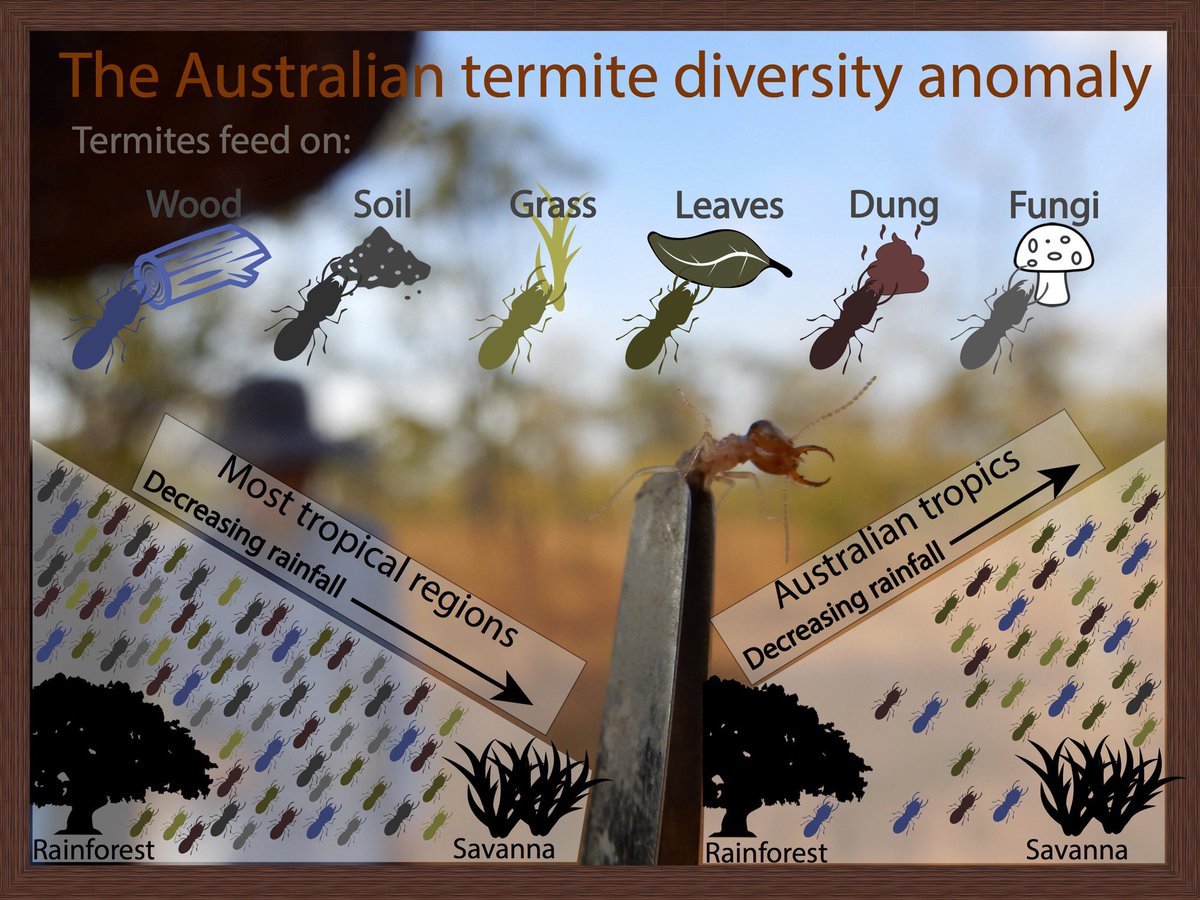What’s so wacky about Australia’s termites? Check out our new paper in @FrontEcolEvol “Assessing the Australian Termite Diversity Anomaly: how habitat and rainfall affect termite assemblages” to find out! And now, a thread about the termites: https://www.frontiersin.org/article/10.3389/fevo.2021.657444">https://www.frontiersin.org/article/1... #scicomm
First, a huge thank you to my collaborators @AmyZanne @red_termite @StevenDAllison @LucasCernusak @AWCheesman Habacuc Flores-Moreno and Abbey Yatsko for making this possible and being great supporters. Fun having such a great team for my first PhD pub! #phdchat #scienceisfun
So why do we care about the Australian termites? Termites in general get kind of a bad rap—people just think of them as nasty little pests that chew on the wood in your house when you don’t know they’re there #pestcontrol #termite
It turns out, only a small proportion of termite species are pests, and very few termite species even feed on wood! A lot of the world’s termites feed on dead grass, litter, #fungus, and soil and play an important role in #decomposition especially in the #tropics
In most places in the world, termite diversity seems to be tied pretty closely to rainfall—there are more termites and more types of termites in rainforests and areas with a lot of #precipitation
However, in #Australia, because of its unique #biogeography and climate, we think the termites might be doing something different. For this study, we measured termite diversity in 5 sites across a rainfall gradient to see what’s going on.

 Read on Twitter
Read on Twitter



